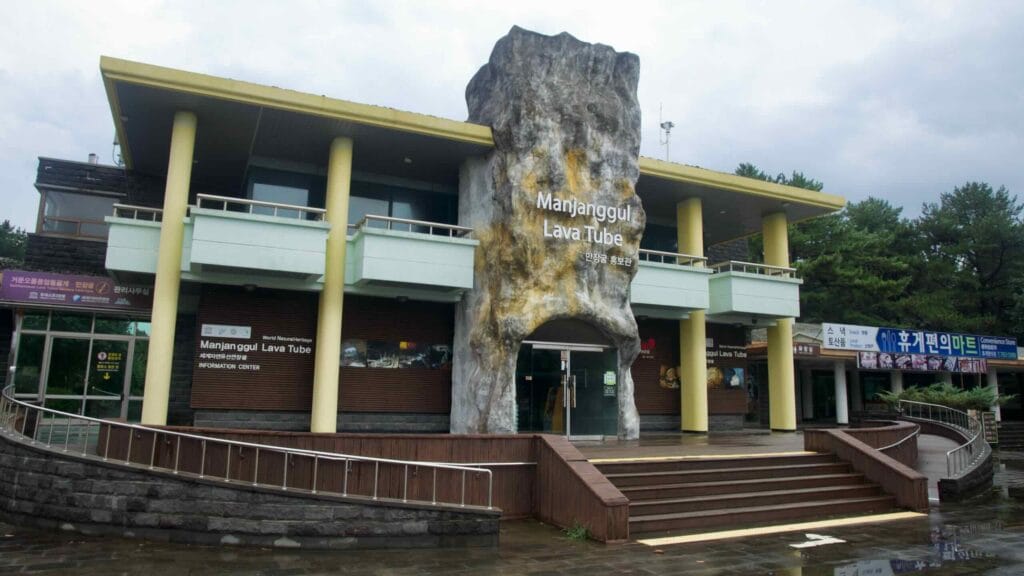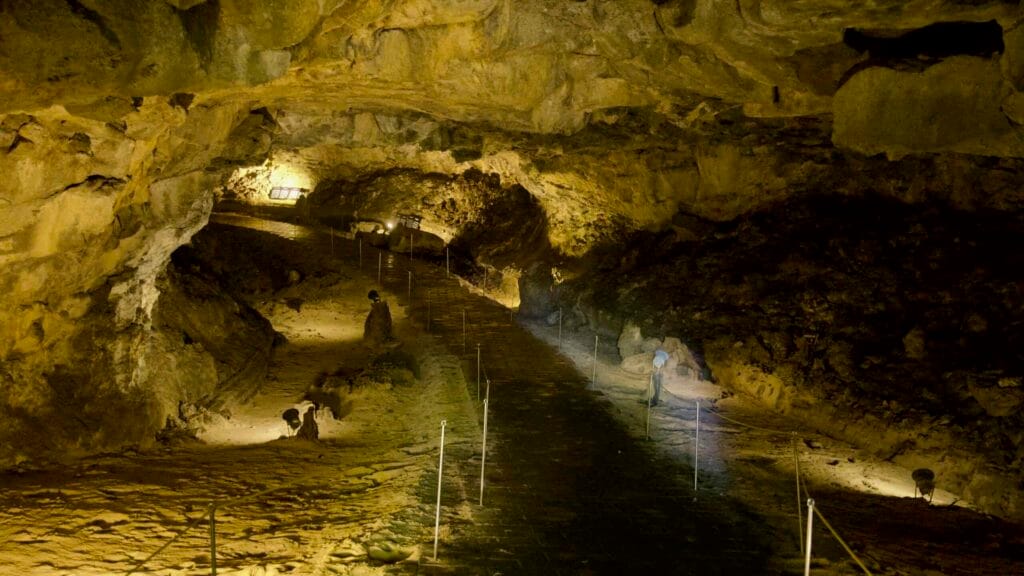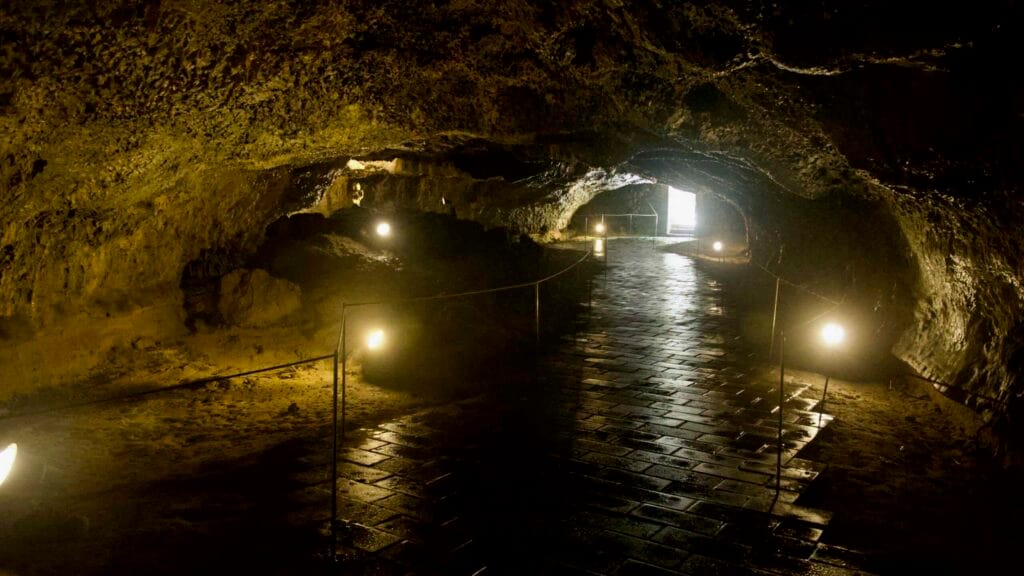Manjang Cave
Manjang Cave (만장굴; map; Manjanggul), located on Jeju’s northeast coast, is one of the island’s most noted natural landmarks.
As part of the UNESCO-designated Geomun Oreum Lava Tube System, Manjang’s lava tubes stretch approximately 7.4 kilometers, with ceilings up to 25 meters high—making it one of the longest lava tube systems in the world.
While the entire cave system remains off-limits to preserve its delicate ecosystem, visitors can explore a 1-kilometer section, offering a glimpse into Jeju’s volcanic origins.
Geology
Manjanggul was first explored in 1946 by Bu Jong-hyu, a Gimnyeong Elementary teacher, with a student expedition. He measured the cave, published the results, and gave it its name.
Manjang Cave is a prime example of how molten lava shaped Jeju. Formed over 100,000 years ago, the cave shows how hot lava carved underground channels before cooling and solidifying into its present form.
Inside the cave, visitors encounter largely undisturbed volcanic formations created over millennia. Stalactites hang from the ceiling, formed from molten rock as it dripped and cooled. On the ground, stalagmites rise where dripping lava once pooled.
One of Manjang Cave’s most striking features is the lava flow lines etched into the walls. These lines mark the height of lava as it surged through the cave. Lava benches, formed as molten rock cooled in layers, reveal how the cave expanded during repeated lava flows.
Manjang Cave’s highlight is the world’s largest lava column, a towering 7.6-meter structure at the end of the tourist path. This feature formed when descending lava met rising flows, creating a natural pillar that illustrates the immense power and scale of volcanic activity.
Inside the Cave
At Manjang Cave, visitors descend steep stairs into a dark interior where temperatures remain a constant 11 °C. Walk through dim lighting—which preserves its fragile ecosystem—along a mix of natural rock and wooden walkways stretching 1 kilometer.
Highlights within the cave include:
- Lava Flow Lines: Horizontal markings along the walls showing the height of lava flows as they coursed through the cave.
- Turtle Rock: A famous formation that resembles a turtle, believed to represent Jeju Island itself; a favorite photo spot.
- Lava Toes: Smooth, rounded formations on the cave floor, created as flowing lava cooled and solidified; their shape resembles toes.
Ecology and Preservation
Manjang Cave’s cool, dark interior provides a habitat for rare and specialized species, including common bent-wing bats—which form large colonies within the cave—and the Jeju cave spider, found only in Korea.
This fragile ecosystem has made Manjang Cave a focus of conservation efforts. Strict rules, such as limiting tourists to a 1-kilometer section, minimize human impact and protect its integrity. Artificial lighting is kept minimal, preventing algae growth that could harm the natural formations.
Manjang Cave was designated a Natural Monument (No. 98) by Korea in 1962, and later included in the UNESCO World Heritage listing as part of the Geomun Oreum Lava Tube System in 2007.
Visitor Information
- Admission: Adults ₩4,000; Youth and Children ₩2,000.
- Hours: Open daily 9:00 AM–6:00 PM (last entry 5:10 PM).
- Accessibility: Uneven terrain may challenge visitors with mobility issues. The route includes stairs and natural paths; sturdy shoes are necessary.
- Facilities: Parking area, restrooms, and a visitor center with interpretive displays near the entrance.
- Best Time to Visit: A cool retreat year-round. Mornings are less crowded, providing a quieter experience.






















